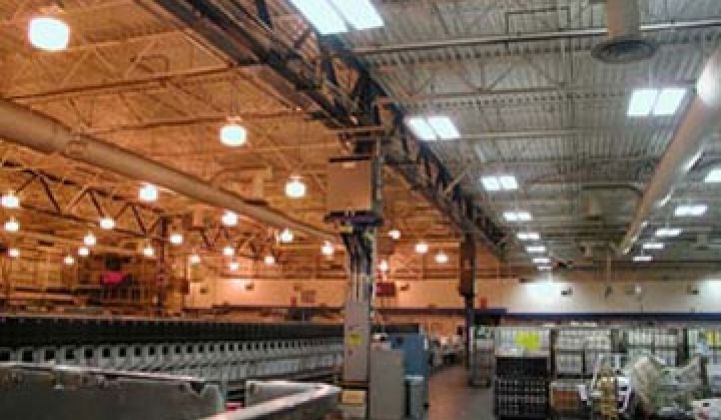The San Francisco Processing and Distribution Center is a poster child of sorts for the U.S. Postal Service's efficiency goals – a 1.2 million square foot facility, with 3,000 employees and hundreds of trucks rolling in and out every day, which now uses about half the energy it did a few years ago.
It cost Chevron Energy Solutions $15 million to install the project's energy-efficient lighting and chillers, software-controlled heating and air conditioning systems, solar panels and fuel cell. But those are all saving the building about $1.2 million a year on electric bills, as well as a 69-percent reduction in heating, mostly from natural gas.
Buildings use about 40 percent of the energy generated globally and generate nearly half the world's greenhouse-gas emissions. But DOE believes that could be cut by at least 30 percent (see Making Building Automation Brainier).
The DOE also has billion of dollars to test the prospect, including $4.5 billion to retrofit federal buildings, $3 billion to grants for state energy efficiency programs and $5 billion to assist weatherization of homes for low-income families, among other potential funding sources (see DOE Doles Out $780M for Weatherization and Green Light post).
While some of that will go to insulating homes and other smaller-scale projects, it's still a lot of stimulus for an industry that saw sales of about $3.6 billion in 2006, according to the National Association of Energy Service Companies.
Chevron Energy Solutions is one of 16 energy service companies, or ESCOs, that have been picked to mastermind many of those building efficiency projects. Others, include Honeywell, Johnson Controls, Lockheed Martin, Siemens and Schneider Electric's TAC Energy Solutions, as well as energy services divisions of power providers like Pepco, Consolidated Edison, Florida Power & Light and Constellation Energy.
Then there are companies like Echelon that combine building automation and smart meters, or Cisco, which envisions controlling computers, air conditioners, security cameras and more from a centralized, IP-based network (see Cisco Rolls Out Building Management 'Mediator'). Hooking solar panels and fuel cells to the grid present a whole new set of challenges.
The Postal Service could be a model for what's to come in the energy efficiency field, since it's a bit of a model customer. Government entities, schools, universities and other publicly funded entities make up about four-fifths of energy efficiency retrofit jobs.
Not only can they usually borrow money more cheaply, they can also afford longer payback times. A $108 million, 400-building retrofit – mostly replacing light bulbs – across USPS's Pacific region is expected to pay itself off in about 10 years, according to Ray Levinson, a USPS environmental specialist.
Public customers also tend to know they're going to be using the same buildings decades from today. Commercial buildings switch tenants and owners more frequently, making it harder to negotiate sharing the costs and benefits of investing in efficiency (see The Big Green Market: Schools).
Those factors have limited private investment into grand-scale energy efficiency retrofits, though it's still growing (see A PPA Model for Building Energy Efficiency?). That's too bad, because grand scale is actually cheaper in the long run, said Raymond Wong, senior project manager at Chevron Energy Solutions.
Take more efficient lighting. It's almost always the cheapest and fastest retrofit, but it's also the most standard, and thus not an attractive target of government incentives. HVAC retrofits take longer and cost more, since they're supposed to last decades, not years, but can offer longer returns.
Almost any efficiency improvement, in turn, pays back faster than solar panels or distributed generation systems. Still, those typically often offer the sweetest incentives. So Chevron combined them all, smoothing over the longer payback times for its 285 kilowatts of solar panels with the quick returns on installing more efficient fluorescent light bulbs.
Image of the San Francisco Processing and Distribution Center via the DOE.
Learn how to differentiate your company through greener product lines at Greening the Supply Chain on September 17 in Boston.




